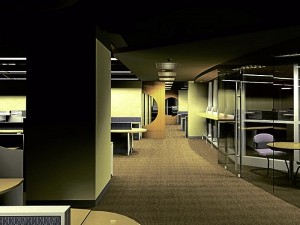
HARD-WEARING carpet is necessary in high-traffic areas like call centers. The use of inexpensive carpet often leads to premature wear and the need for replacement, making it more expensive—and wasteful—in the long term.
“In the beginning, God created the heavens and the earth … and everything else in between was made in China.” It’s a popular joke, referring of course to China’s dominance in production of just about anything and everything in the consumer market.
With the influx of foreign companies bringing in their technology, expertise and the hope of producing their goods at a much lower cost, China has learned to improve its products to even cater to the discerning higher end market. Sadly though, what makes its way to our shores and onto our store shelves are usually the cheaper—and inferior—products.
As owners, designer builders and end-users, our choices usually land right there, smack in between the beautiful and durable materials that last almost forever, and the almost-beautiful ones that are affordable but not very durable. Given most budgets, most end up choosing the latter. But cheaper usually equals inferior, and a life of impermanence.
Affordability
“Affordable” has come to mean that it is prone to break easily, and needing replacement sooner than you thought. The finer and more lasting choices in life certainly don’t come cheap.
In these days when we need to curb our appetites for consumption, bear with increasing labor costs, and consciously develop habits to conserve our environment, “affordable” can be a short-sighted word. Buying cheap can be a destructive habit.
Consider consumption issues in retail design and construction: as more malls come up, spaces are leased and fitted out. Two years later, retail shops close and their spaces are cleared to accommodate a new tenant. If they don’t leave, they are likely to do some renovation.
The same happens with corporate facilities, hotels and other spaces that are always in competition with the newest kid on the block. For most business enterprises, constant change of address and constant improvement of premises is inevitable, but renovation expenses have to be managed to reduce capital expenditure.
Factors to consider
As owners, designers, builders and end-users, we need to be thorough and realistic in the decision-making process: we must be able to understand the function of our spaces and places, and identify where durability, beauty, or quality have to take precedence. It’s a tough discernment process. Ultimately, it’s about the kind of performance we expect from materials.
One factor to consider is whether the material can be dismantled for reuse. Take for instance laminate wood flooring, which is installed as a “floating” floor, anchored only at the edges where it meets the walls and can be dismantled and reused.
Another factor is durability. How hard does your tile floor have to be? An office pantry can benefit from a hard homogenous tile floor, but a less hard porcelain tile (still more durable than ordinary ceramic tile) will probably suffice. I remember a supplier telling me that the tile he was recommending was so hard, you could drive an eight-wheeler truck over it. I told him we had no plans of driving a truck through the laundry room we intended the tile for, and that he could probably show us other more practical and cost-effective options.
A high-traffic call center needing carpet is better off with something more hard-wearing, even if it may be more expensive initially, as a cheaper one will wear quickly under the soles of many shoes. Having to replace one too soon is a waste of precious resources.
Choices
Furniture meant for outdoors must use UV-rated materials. Ordinary fabric upholstery and plastic weaving will become brittle in a year or to, given our weather conditions. Any steel framing must be in aluminum or stainless steel or rust-proofed metal sealed in powder coating. Ouch, yes, expensive! But it’s the only way to make it last. Furnishings and other loose pieces should be built of more durable and permanent material for they can be reused in so many applications. It’s an expense that could go a long way.
Many beautiful things can be cheap at the start but don’t be fooled: they could expensive in the long term. What we find on our building depots, hardware shelves or furniture shops may look really good, but you must do your own quality checks as there are no stringent standards for building materials in the local market.
It is really up to the specifier or user to be on guard. Be realistic about your choices. The more durable the material, the less of it you will have to buy and consume on the long term. And it doesn’t matter whether or not it’s made in China.
Contact the author through designdimensions@abi.ph or through our Asuncion Berenguer Facebook account.

